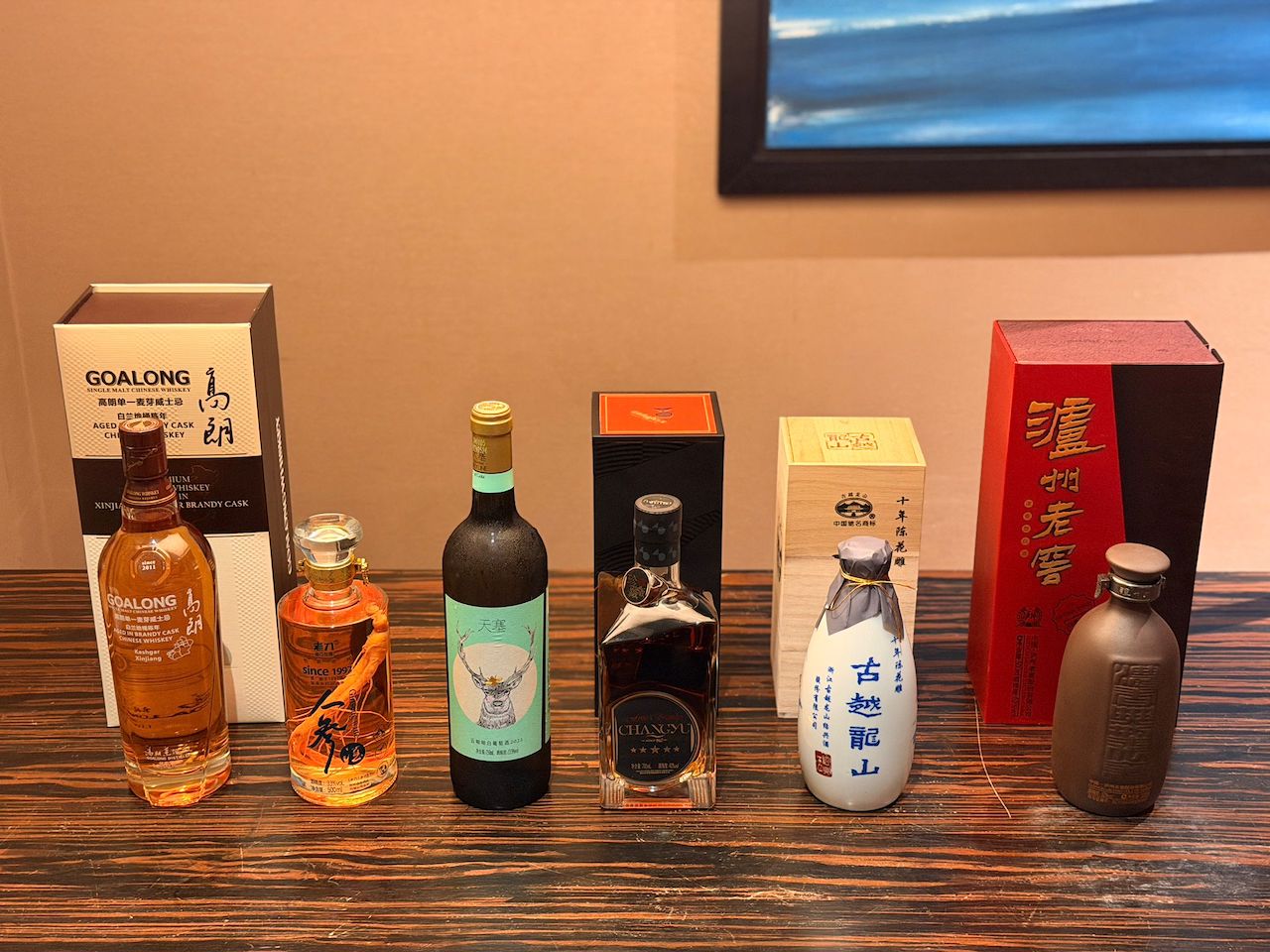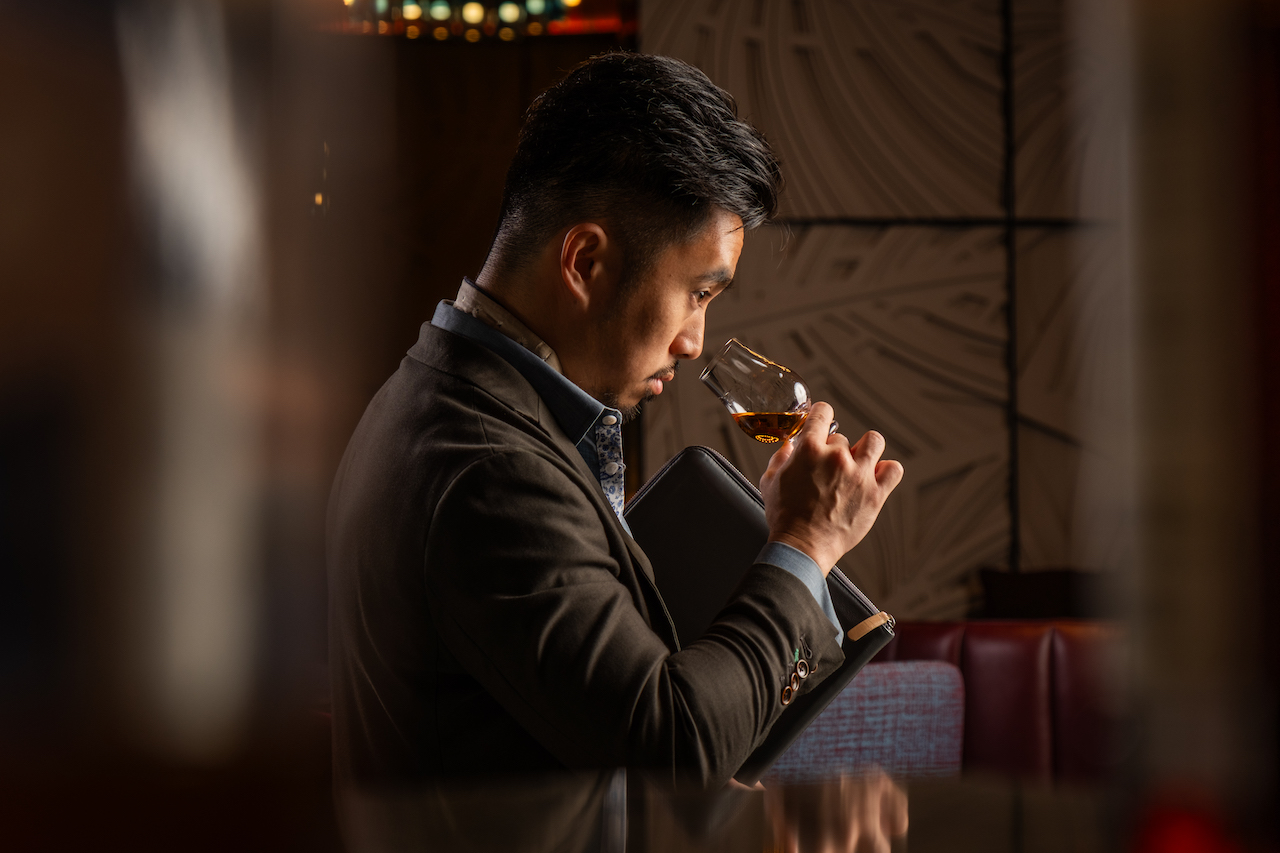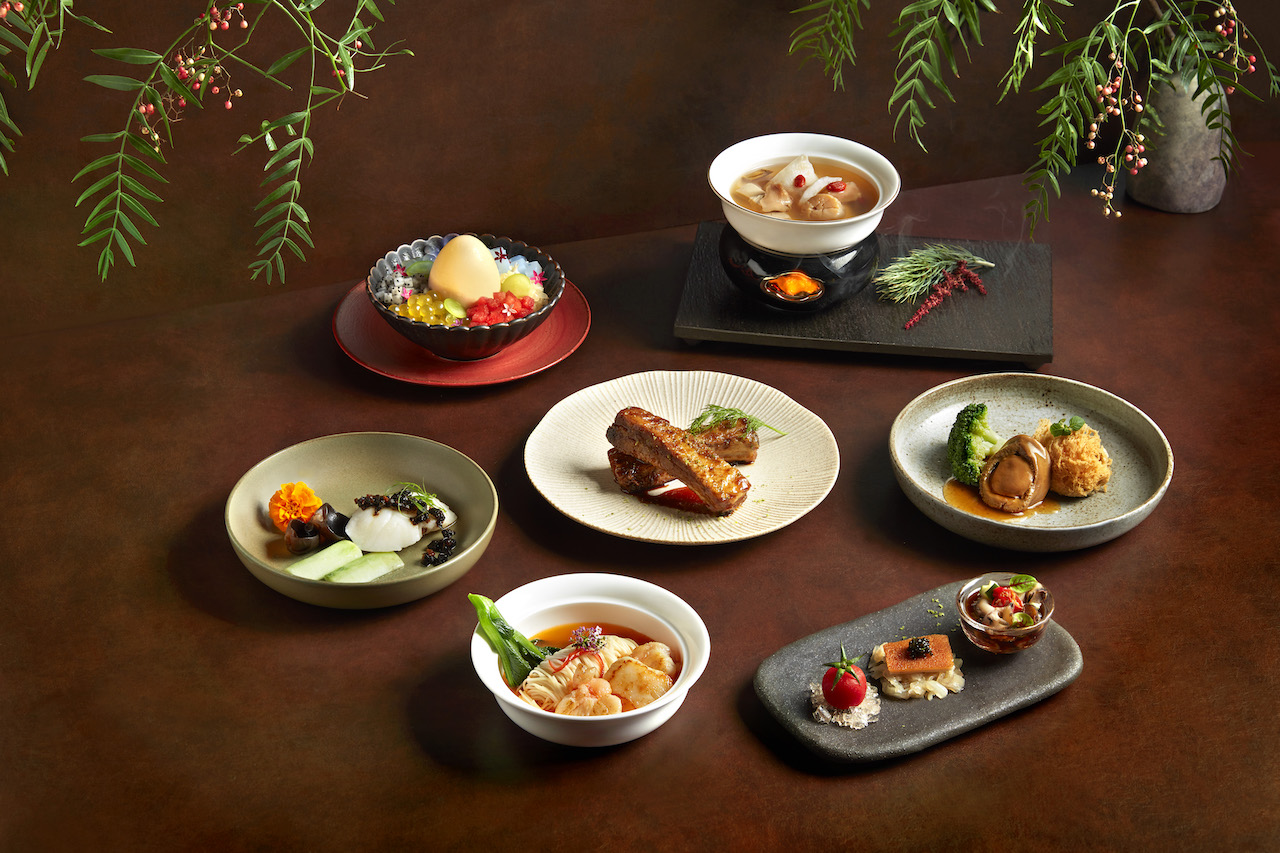Chinese distillers are poised to reshape Asia’s drinking culture as Kweichow Moutai becomes the world’s most valuable spirits brand.
Text by: Dawson Tan
Bewilderment is the particular expression splashed across people’s faces whenever Matthew Wong suggests Chinese whisky over Scotch. It’s that same look that greets suggestions of Chinese wines, brandy, or any spirit emerging from this region. “Most don’t even know about Chinese-produced Western-style spirits,” shares the beverage manager of Pan Pacific Singapore, encapsulating the challenge facing an entire emerging industry.
Never mind that China’s been fermenting and distilling for millennia. Never mind that baijiu, the often-divisive firewater, is technically the world’s most consumed spirit. Yet, in a global context, Chinese spirits aren’t commonplace in most menus. In Singapore, however, that may be about to change, and Matthew is at the forefront, starting with Hai Tien Lo, Pan Pacific Singapore’s flagship Chinese restaurant.

The Baijiu Preface
Matthew’s first acquaintance with Chinese spirits occurred while representing Singapore at the 2013 Southeast Asian Sommelier Competition, where he encountered baijiu in a blind tasting flight. Despite its distinct aroma, he was comprehensively bamboozled. “It was something I was unfamiliar with then,” he admits. But here’s the thing about getting something mortifyingly wrong in front of your peers: it either breaks you or catalyses obsessive research. Matthew did the latter. What he discovered was a spirit category so regionally diverse, so terroir-driven, and so dramatically misunderstood.
“Baijiu’s reputation as an unpleasant spirit consumed purely for bravado and rapid intoxication is deserved,” he suggests. The problem begins with Moutai, arguably baijiu’s most famous export and precisely the worst possible introduction. Its sauce-aroma style, redolent of soy, blue cheese, and overripe fruit, is “the most complex style of baijiu flavour-wise”.

The solution? Start with rice-aroma baijiu like Sanhua, which shares familiar territory with awamori, soju, or vodka. Or try light-aroma varieties like Erguotou, with their floral profiles and lighter complexity. Never mind that the domestic market often dismisses these as cheap because they’re easiest to produce. That’s precisely what makes them ideal gateways for the uninitiated. Matthew’s technique for introducing sceptics is refreshingly honest: “Build the relationship.” Recommend drinks within their comfort zone first. Earn trust. Then, once established, pushing boundaries may be possible.
Baijiu, for all its historical heft and production volume, isn’t where the real story lies. That distinction belongs to Chinese whisky and brandy, categories that didn’t exist a decade ago and are now producing spirits that occasionally make Matthew pause and recalibrate his expectations.

Take Goalong’s Brandy Cask Single Malt from Hunan province, which kicks off Hai Tien Lo’s signature tasting menu: sultana and cardamom on the nose, green apple and pepper on the palate, with mocha and cloves on the finish. This bright freshness and acidity cut through the amuse bouche of fatty suckling pig, while the ripe sweetness balances the heat from the wasabi-laced top shells. Or consider Changyu’s Five Star Brandy from Shandong, boasting fresh apples, caramel, tea leaves, and cocoa, while soft tannins complement mushroom-glazed pork ribs.
While such pours are earning their place on menus in Singapore, they’re not offering better margins than their Western counterparts. The truth is quite the opposite. “Its emerging category tag makes it an even harder sell,” Matthew acknowledges, “putting it further on the back foot if margins were put over the accessibility of having Chinese spirits on the tables of consumers to build awareness and familiarity.” In other words, championing Chinese spirits requires commitment.
Future-Proofing
The growth trajectory of Chinese spirits is undeniably intriguing. Matthew points to Changyu’s Koya brandy line, specifically dedicated to production using Ugni Blanc grapes, with a 15-year XO that’s “very comparable to their Cognac counterparts of similar age range with a very competitive price point.” The challenge? Building reserves and producing reliable top-tier aged spirits consistently enough to shift brand perception. “The potentials are limitless for a less established producing environment ungoverned by appellation regulations,” he suggests.
On whether Chinese producers are following the Scotch playbook or forging something distinctively their own, Matthew’s answer reveals the current transitional state: “What we are currently looking at is heavily framed by the templates set by their Western counterparts. And this is for good reason, as these methods are tried and tested and have credibility amongst consumers.”

At the time of writing, native cépages are being trialled. International grape varieties are being planted in Chinese soil, allowing local terroir to emerge. Local oak forests are being cultivated for domestic barrel production. Even baijiu fermentation techniques are applied to whisky and brandy production. These signs, Matthew insists, point towards “the beginning of a localised style.” It’s the wine playbook, essentially, and China’s already demonstrated it can execute that strategy. Two decades ago, Chinese wine was barely on anyone’s radar. Now, one can spot coveted bottles in wine lists of Michelin restaurants. Matthew reassures that Chinese spirits will follow the same arc, given time and infrastructure investment.
But Matthew’s most arresting discovery isn’t a rare single malt or auction-grade baijiu. It’s the Gu Yue Long Shan 10-year Shaoxing, served chilled alongside warm tomato lobster broth – a pairing that violates every conventional wisdom about serving temperature yet works so spectacularly together. The Shaoxing’s caramelised sweetness from ageing balances the broth’s subtle heat, while the savoury notes tango with the umami.
It’s this willingness to experiment — to chuck convention in the chiller and see what happens —that defines Matthew’s approach. Another pairing, the Lao Dao Ginseng Wine with poached sea perch and aged radish, shouldn’t work by any established rules. But the bittersweet ginseng notes, drawn out by the aged radish’s complex salinity, create something pleasantly harmonious.

The Silver Lining
For all his optimism, Matthew isn’t blind to the category’s self-inflicted wounds. When asked about legitimate criticisms even enthusiasts must acknowledge, he doesn’t hesitate: “The lack of transparency or accessibility to understanding the spirit.” The industry has, he argues, done this to itself: “Most consumers’ first baijiu experience involves Moutai, consumed neat in rapid-fire toasting rituals, then written off forever as unpleasant. Little to none is done in terms of translations, explanations, or culinary pairing guidance for the outside world. This is slowly changing, but at a rate far slower than the growth of the product itself, risking it being misunderstood or worse, dismissed.”
So, where will Chinese spirits be in five years? Matthew’s prediction is measured but confident. “Present, not yet front-runners, but definitely on track to become a respected and permanent part of the global spirits landscape,” he believes. And the producers with the best chance of establishing benchmarks? Those with scale and international backing. Think the likes of YunTuo, Diageo’s single malt whisky from Yunnan province; The Chuan, Pernod Ricard’s prestige pure malt whisky from Sichuan province; and Changyu’s Chateau Koya, China’s first brandy from Shandong province. The aforementioned have the resources for experimentation, the patience for long-term infrastructure investment, and the library stocks necessary to compete at super-premium levels.
What Chinese spirits need now isn’t validation from auction houses or collectible hysteria. They need what Matthew is trying to provide at Hai Tien Lo: considered placement alongside global counterparts, thoughtful pairings that showcase their strengths, and patient education that builds understanding rather than perpetuates misconceptions.
The world’s most valuable spirits brand may be generating headlines, but the real story is unfolding in glasses across discerning restaurants and bars. Matthew learned that lesson by getting bamboozled at a competition 12 years ago. The rest of us are only just catching up.
